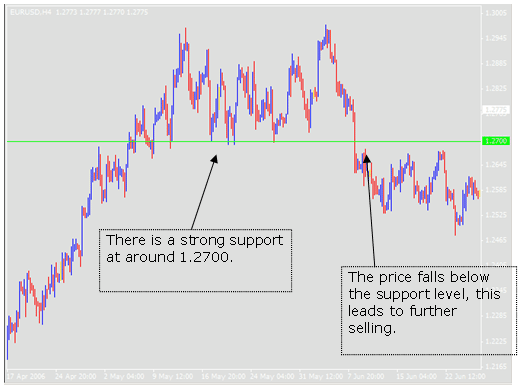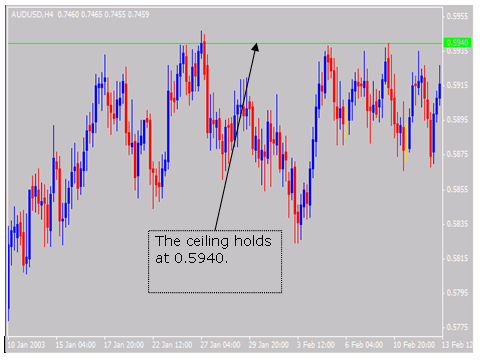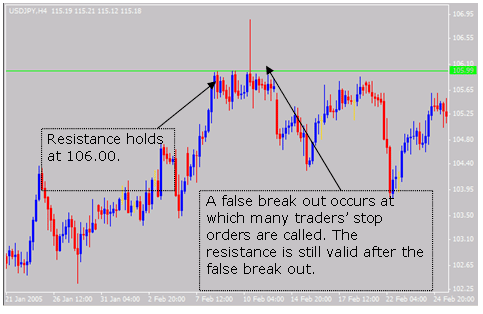Technical Analysis III: Support and
Resistance
What are support and resistance?
Support levels are prices where buyers have
shown or are likely to show strength. Resistance
levels are prices where sellers are likely to be
strong.
Support
Support levels essentially give the market a
'floor', since they are areas where buyers tend
to be strong. If the price falls to a strong
support level, traders should expect buyers to
step in and drive the price up, or at least keep
it from moving any lower.
Because support levels are prices where
buyers are supposed to be strong, if the price
falls below a support level, this is a signal
for the market. It shows that there is more
selling pressure (or less buying) pressure than
previously thought, and it often leads more
traders to exit long positions and take short
positions.

Resistance
Resistance levels perform the opposite
function of support, which provide a 'ceiling'
to the market. If the price rises to a strong
resistance level, short sellers should be
expected to enter the market and traders in long
positions may cover their positions to take
profits. This combination of selling pressure
will often drive the price lower.
Resistance functions in the same manner as a
safety net for short positions and an entry
point for traders looking to buy on a breakout.

When a price breaks through a resistant
level, it often triggers a large number of stop
orders and makes for even greater buying power.
Often the stronger the resistant level, greater
the number of stops that are triggered and the
larger the move above resistance.
Unfortunately, not every breakout is valid.
Because they know that many traders place stops
to sell just above resistant levels, some large
institutional traders attempt to drive the price
higher in the short term just to trigger these
stops. Without any real force behind the move
higher, the price can fall back to resistance.
The same dangers of false breakouts apply to
support levels as well.
 |